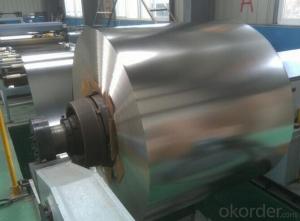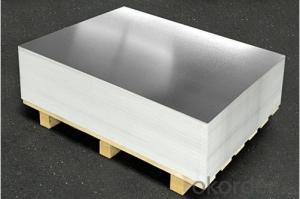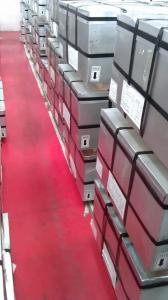Electrolytic Tinplate Metal Package Useage of Chemical or Industrial Use
- Loading Port:
- Tianjin
- Payment Terms:
- TT OR LC
- Min Order Qty:
- 50 m.t.
- Supply Capability:
- 30000 m.t./month
OKorder Service Pledge
OKorder Financial Service
You Might Also Like
Specification
1.Structure of Electrolytic Tinplate Metal Package Useage of Chemical or Industrial Use Description
The tinplates are specified as per the steel base, extent of tempering, the coating weight, annealing method and the surface finish.
The base steel is continuously cast and aluminum killed. The base steel can be single reduced or double reduced. The base steels are of the following three types.
2.Main Features of the Electrolytic Tinplate Metal Package Useage of Chemical or Industrial Use
Appearance – Tinplate is characterized by its beautiful metallic luster. Products with various kinds of surface roughness are produced by selecting the surface finish of the substrate steel sheet.
Paintability and printability – Tinplates have excellent paintability and printability. Printing is beautifully finished using various lacquers and inks.
Formability and strength – Tinplates have got very good formability and strength. By selecting a proper temper grade, appropriate formability is obtained for different applications as well as the required strength after forming.
Corrosion resistance – Tinplate has got good corrosion resistance. By selecting a proper coating weight, appropriate corrosion resistance is obtained against container contents. Coated items should meet 24 hour 5 % salt spray requirement.
Solderability and weldability – Tinplates can be joined both by soldering or welding. These properties of tinplate are used for making various types of cans.
Hygienic – Tin coating provides good and non toxic barrier properties to protect food products from impurities, bacteria, moisture, light and odours.
Safe – Tinplate being low weight and high strength makes food cans easy to ship and transport.
Eco friendly – Tinplate offers 100 % recyclability.
Tin is not good for low temperature applications since it changes structure and loses adhesion when exposed to temperatures below – 40 deg C.
3.Electrolytic Tinplate Metal Package Useage of Chemical or Industrial Use Images


4.Electrolytic Tinplate Metal Package Useage of Chemical or Industrial Use Specification
Specification of :
Standard: ISO 11949 -1995, GB/T2520-2000,JIS G3303,ASTM A623, BS EN 10202
Material: MR,SPCC
Thickness:0.15mm - 0.50mm
Width: 600mm -1150mm
Temper: T1-T5
Annealing: BA & CA
Coil Inner Diameter: 508mm
Weight: 6-10 tons/coil 1~1.7 tons/sheets bundle
Passivation:311
Oil: DOS
Surface: Finish,bright,stone,matte,silver
5.FAQ of Electrolytic Tinplate Metal Package Useage of Chemical or Industrial Use
- Which port do you ship from?
We ship from China Shanghai port.
- What is your Minimum Order Quantity?
Usually MOQ is 50tons for one single size, for trial order, it can be 25 tons.
- Q: How is tinplate affected by exposure to light?
- Tinplate is not significantly affected by exposure to light. It is a durable material that can withstand various environmental conditions, including light exposure, without any major changes or deterioration.
- Q: How does tinplate compare to tin-free steel in terms of properties and applications?
- Tinplate and tin-free steel have distinct properties and applications. Tinplate is steel coated with a thin layer of tin, making it corrosion-resistant, ductile, and ideal for applications requiring high aesthetic appeal, such as food and beverage packaging. On the other hand, tin-free steel lacks the tin coating but compensates with a polymer or metallic coating, offering enhanced strength and weldability. Tin-free steel finds application in various industries, including automotive, construction, and industrial packaging, where durability and cost-efficiency are prioritized over aesthetic requirements.
- Q: How is tinplate protected during transportation and storage?
- Tinplate is protected during transportation and storage through various measures such as applying protective coatings, using packaging materials like wooden crates or pallets, and ensuring proper handling and storage conditions to prevent damage from moisture, corrosion, and physical impact.
- Q: Can tinplate be used for confectionery packaging?
- Yes, tinplate can be used for confectionery packaging. Tinplate is a type of steel coated with a thin layer of tin, which provides excellent resistance to corrosion and is a safe material for food packaging. It is commonly used for confectionery tins and cans due to its durability, protective properties, and ability to maintain the freshness and quality of the product.
- Q: Can tinplate be used for construction applications?
- Yes, tinplate can be used for construction applications. It is often utilized for roofing, siding, ceilings, and other structural components due to its durability, corrosion resistance, and lightweight properties.
- Q: How does tinplate perform in terms of odor resistance?
- Tinplate performs well in terms of odor resistance due to its non-reactive and impermeable nature, which prevents the absorption and transmission of odors.
- Q: How does tinplate packaging contribute to brand recognition?
- Tinplate packaging contributes to brand recognition by offering a distinctive and visually appealing presentation of the product. The use of tinplate materials allows for unique designs, vibrant colors, and intricate details that can catch the attention of consumers. This eye-catching packaging helps to create a lasting impression on customers, making them more likely to remember and recognize the brand. Additionally, the durability and premium feel of tinplate packaging can enhance the perceived value and quality of the product, further strengthening brand recognition and loyalty.
- Q: How does tinplate contribute to the preservation of photographic equipment?
- Tinplate contributes to the preservation of photographic equipment by providing a durable and corrosion-resistant material for the construction of camera bodies and other components. This helps protect the sensitive internal mechanisms from external factors such as moisture, dust, and physical damage, thereby extending the lifespan of the equipment. Tinplate also helps maintain the overall aesthetic appeal of the equipment, as it can be easily coated or painted to enhance its appearance and protect it from scratches or wear.
- Q: How does tinplate contribute to the overall stackability of packaging?
- Tinplate contributes to the overall stackability of packaging due to its high strength and rigidity. It provides stability to the packaging structure, preventing it from collapsing or deforming when stacked. Additionally, tinplate's smooth and flat surface allows for better alignment and interlocking of packages, ensuring a stable and secure stack.
- Q: What are the main factors influencing the growth of the tinplate industry?
- The main factors influencing the growth of the tinplate industry include increasing demand for packaged food and beverages, expanding urbanization and industrialization, advancements in technology leading to improved production processes, and the growing awareness about the benefits of metal packaging such as durability, recyclability, and food safety. Additionally, economic growth in emerging markets and the rising disposable income of consumers are also driving the growth of the tinplate industry.
Send your message to us
Electrolytic Tinplate Metal Package Useage of Chemical or Industrial Use
- Loading Port:
- Tianjin
- Payment Terms:
- TT OR LC
- Min Order Qty:
- 50 m.t.
- Supply Capability:
- 30000 m.t./month
OKorder Service Pledge
OKorder Financial Service
Similar products
Hot products
Hot Searches
Related keywords




























